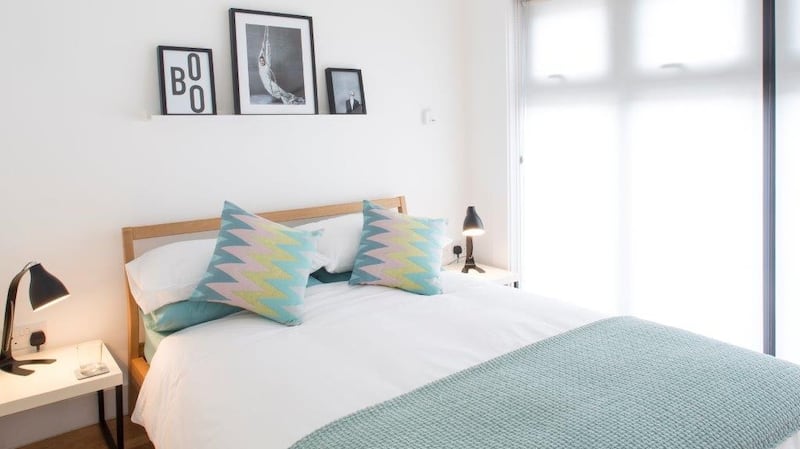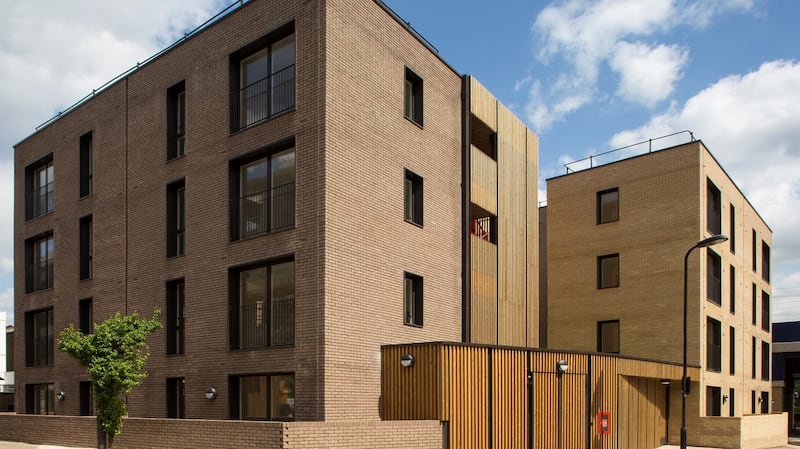The squeeze is on. Not only did we have that diktat from former environment minister Alan Kelly reducing apartment sizes nationwide, but now some developers are actually promoting the notion of "pocket living".
Micro houses and apartments are mostly associated with Japan, where land is at a premium and urban density very high, particularly in Tokyo. There, many single people are quite happy to settle for flats that could be as small as 23sq m.
It’s an idea that has caught on in London, where more conventional homes are even less affordable than in Dublin, and involves building blocks of single-bedroom apartments for sale to first-time buyers who are described as “city makers”.


A London company called Pocket says its target market for 38sq m flats consists of people "who contribute so much economically, socially and culturally to our city, yet are unable to buy their first home. We're changing things so they can."
But these are not at all like the poorly-designed shoeboxes produced by Zoe Developments in Dublin during the early 1990s. Laid out along narrow, artificially lit corridors, they gave apartment living a bad name.
Priced 20 per cent lower than the open market, Pocket’s compact apartments usually have big windows for lots of natural light, good insulation, showers, storage, underfloor heating, “switches and sockets in all the right places”, and secure bicycle parking.
Blocks of 20 to 50 units have been built by Pocket in up-and-coming areas such as Ealing, Hackney and Streatham, and all of these developments have been designed by award-winning architects – unlike Dublin’s earlier “architect-free” schemes.
Standards
Hazel Jones, planning and affordable housing director of
Bartra Capital
Property, agrees that there was a “huge negative reaction” to shoeboxes, but says
Dublin City Council
went to “the opposite end of the spectrum” by specifying unrealistically high standards.
“London standards are higher than here, but its local authorities recognised that there was a niche market for smaller, well-designed units aimed at younger people, to help them get on the property ladder in the context of a housing shortage.”
Jones heard about Pocket and was impressed by the clever design of its apartments, with well-equipped kitchens, good storage and floor-to-ceiling height of 2.7m. “You’d be delighted in your twenties to have somewhere like that,” she says.
Bartra’s chief executive, Mike Flannery, believes there would be a market in Dublin for well-designed compact apartments among twentysomethings who “want to be part of city life, within walking or cycling distance of their work, not marooned in the suburbs.”
Bartra – founded by former Treasury Holdings boss Richard Barrett – is "talking to Pocket about the possibility of doing a demonstration project here" and will be seeking a meeting with Dublin City Council planners to outline the concept. A site at Bulloch Harbour in Dalkey is also under consideration.
No lifts
Seen as suitable for small sites, such as the last remaining derelict site in Fishamble Street, Flannery says a building “would need to be no more than three storeys high to avoid having to put in lifts. But those who live there would see running up and down stairs as part of an exercise regime.”
With Apple, Paypal and other tech companies complaining that there is difficulty finding accommodation in Dublin for their staff, Jones says the planners "need to give punters credit for being more sophisticated than they were" – and this applies, in particular, to prospective owner-occupiers.
Given that Alan Kelly’s statutory guidelines for apartment design specify minimum space standards of 45sq m for one-bedroom flats and 40sq m for studios, there would need to be some further relaxation to permit Pocket-style apartments on the London model.
Pocket, which is headed by former investment banker and city cyclist Marc Vlessing, has pioneered a new wave of affordable “micro-housing” that can be built and sold for about £220,000 (€280,400) per unit – significantly lower than standard one-bedroom flats.
But getting the planners on board was still a tough job. “You can imagine that they were rather sceptical,” Vlessing told building.co.uk. “So, there was a big hearts and minds campaign. We were very lucky that we found a number of local authority officers that were prepared to work with us.”
One of Pocket’s selling points was that apartments would only be sold to first-time buyers with roots in a particular area, exclusively for owner-occupation, and that there would be covenants to ensure that units would remain “affordable” even if they were sold on at a later stage.
According to Vlessing, Pocket will roll out some 3,000 units over a 10-year period and expects to make a return of 17-20 per cent on every project.
Clearly, Bartra Capital Property sees an opportunity to make similar returns if it is allowed to introduce micro-living to Dublin.











